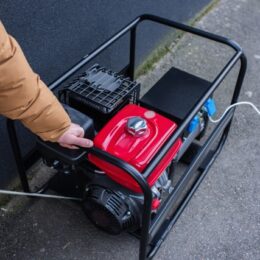
- Start by participating. Half of what American households throw away is recyclable. Check locally to know what’s accepted in your curbside recycling and what day it’s picked up, or find a nearby drop-off site.
- Know what to throw. Recycling is a global issue that requires local solutions. Many communities accept different materials. Visit your local city website to learn what materials are and are not accepted.
- Know what not to throw. Plastic bags, clothing, food and liquid, garden hoses, electrical cords, Styrofoam, needles and yard waste are on the “no list.” They do not belong in curbside recycling.
- Twin the bin. Make it easy for anyone in your house to recycle – just as easy as it is to throw something away. Locate your in-home recycling bin next to your trash can. For extra credit, twin the bin in your kitchens, bathrooms, and laundry room. Most of a home’s recyclables originate in these three rooms.
- Empty your recyclables. Before you toss your empty cans, bottles, and cartons, make sure you remove food waste and such – then recycle.
- Return items to stores for recycling. Some items can’t be recycled at the curbside. These include plastic wraps and films, plastic shopping bags, and air shipping pillows. Many retail locations provide recycling centers for these items.
- Keep electronics and batteries out of the recycling cart. While these should be recycled, batteries and electronics do not belong in your curbside recycling cart or bin. These can start fires at recycling centers and in trucks. Please take a moment to check locally for hard-to-recycle items.
- Don’t bag your recyclables. Most curbside recycling and drop-off programs require recyclables to be placed directly into the cart or bin. Unless your community instructs otherwise, don’t bag your recyclables.
- Reduce, reuse, and rethink. When it comes to sustainability, reducing, reusing and rethinking only help to further recycling efforts to protect our planet. Find ways to reduce your consumption, reuse items, and rethink your needs and approach. For example, you can:
- Reduce by purchasing smaller amounts of food or having it pre-cut to your family’s unique needs. Remember, when it comes to sustainability, it starts at the cart.
- Reuse by eliminating single-use items and opting instead for a reusable shopping bag.
- Rethink by considering the packaging of what you purchase to see if it’s recyclable or how you approach your consumption when it comes to items like cloth vs. paper napkins.
While recycling may feel universal, the truth is only slightly more than half of Americans can recycle at home as easily as they can throw something away, but together we’re working to change this and transform U.S. recycling for good. — The Recycling Partnership



